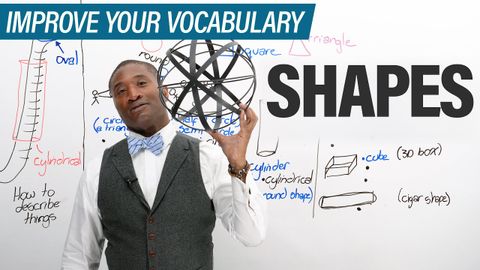提高你的英語詞彙量。形狀 (Improve Your English Vocabulary: SHAPES)
Summer 發佈於 2021 年 03 月 21 日  沒有此條件下的單字
沒有此條件下的單字- adj.異性戀者;異性戀的;率直的;立刻的;直的;整齊的
- adv.筆直地;立刻地;誠實地;直接地;立即
- n.異性戀者
- v.t./i.弄直
US /voˈkæbjəˌlɛri/
・
UK /və'kæbjələrɪ/
US /ˈɪnstəns/
・
UK /'ɪnstəns/
- n. (c./u.)例證;實例;事件;實例 (電腦)
- v.t.例
- phr.應…的要求
US /dɪˈskraɪb/
・
UK /dɪ'skraɪb/
